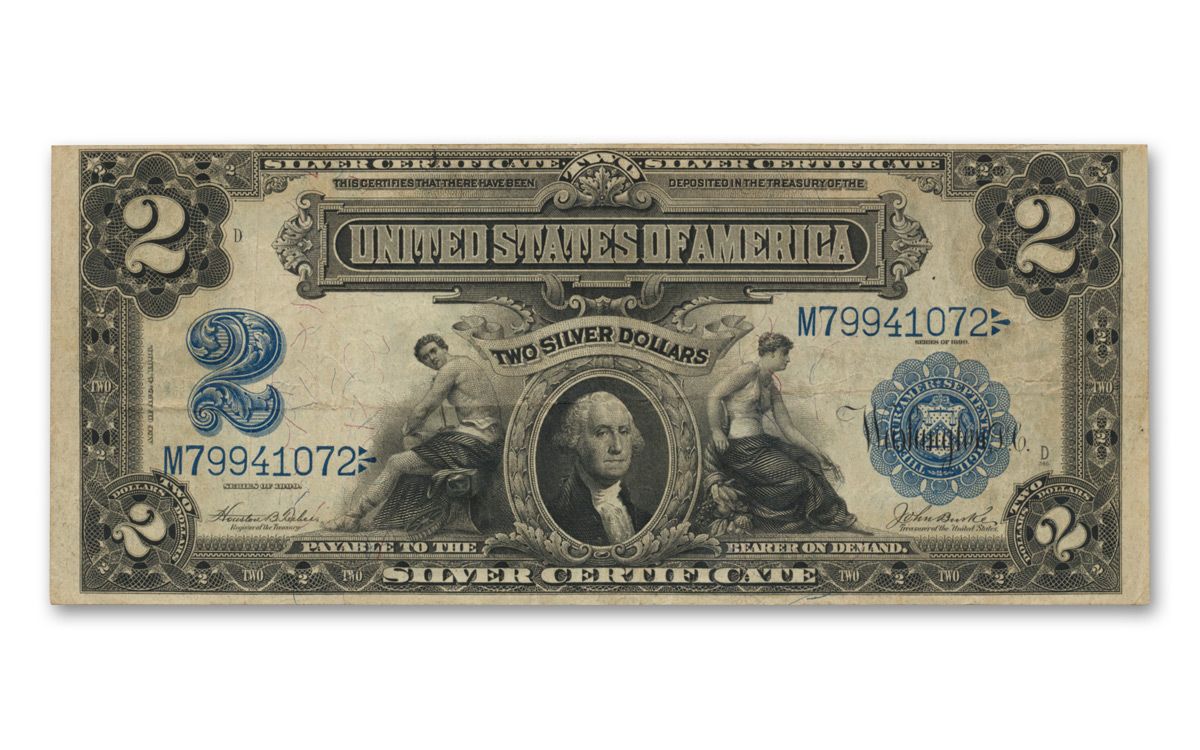What Is a Silver Certificate?
A silver certificate is a type of legal tender in the form of paper currency issued by the U.S. government in 1878. These certificates were eventually phased out in 1964 and today can be redeemed for their face value in cash only rather than in actual silver.

KEY TAKEAWAYS
- A silver certificate is a type of former legal tender in the paper currency that the U.S. government issued in 1878.
- It represented a stated amount of silver bullion, enabling individuals to buy the commodity without taking physical possession of it.
- In March 1964, the U.S. Treasury Secretary announced that silver certificates would no longer be redeemable for silver dollars.
- Today silver certificates can be redeemed for their face value in cash only.
Understanding Silver Certificates
Silver certificates were created to allow investors to buy silver without having to possess the commodity physically. They represented a stated amount of silver bullion purchased or held by an investor and were deemed payable to the bearer upon demand.
The first releases of the silver certificate notes were more significant than their subsequent counterparts, similar in dimensions to the modern U.S. paper currency in circulation today. The more significant certificates had denominations ranging from $1 to $1,000, while the smaller-sized ones were available mainly in lower denominations. These certificates featured portraits of notable Americans, including George Washington, Abraham Lincoln, and Ulysses Grant.
In March 1964, the U.S. Treasury Secretary announced that silver certificates would no longer be redeemable for silver dollars, and the government stopped printing them soon after.
History of the Silver Certificate
Although the U.S. stopped minting silver coins in 1806, gold and silver coins were usable as legal tender until 1861. Before the release of the silver certificates, the United States was on a bimetallic standard. U.S. residents often accumulated wealth in the form of silver bullion, which they were free to change into coins considered legal tender. Residents could also have coins made from gold in their possession.
The 1873 Coinage Act abolished the right of individuals to have silver changed into silver coins. Western mining companies and bankers wanted the return of the two metal systems. By the late 1880s, many Americans were against a fixed supply of paper currency, fearing the supply of money would run out.
Western interest fanned the flames of public distrust. These critics knew that an unlimited amount of currency in circulation would lead to higher prices, which they saw as a benefit and not as inflationary. Severe depression and deflation in 1863 had drawn the lines between Northeastern industrialists, who favored currency limitations, and the Midwestern and Southern farmers. They saw the limiting damaging their ability to charge more for their crops.
Proponents argued that higher prices would allow farmers to pay off debts. The primary issue of the debate became over using gold or silver to back the U.S. currency. In the end, the gold backers won the white house and the discussion, and the USD went on the gold standard, ending bimetallism, demonetizing silver, and ushering in the issuance of silver certificates.

1878
Under the Bland-Allison act of 1878, the U.S. government began enabling people to deposit silver coins at the U.S. Treasury in exchange for certificates, which were easier to carry.
Collectible Silver Certificates
Some silver certificates are worth quite a bit more than their face value. The exact value of a specific silver certificate depends on several factors, including its condition and rarity. For many people, the allure of these certificates lies in their collectability and the nostalgic significance they represent.
Silver certificates continue to appeal strongly to currency collectors and history buffs. These certificates can represent an interesting historical artifact, serving as a time capsule that can transport the holder back to a period when many exciting and important events were happening in the country. It is also a tangible example of the changes occurring in the currency system at that time.





